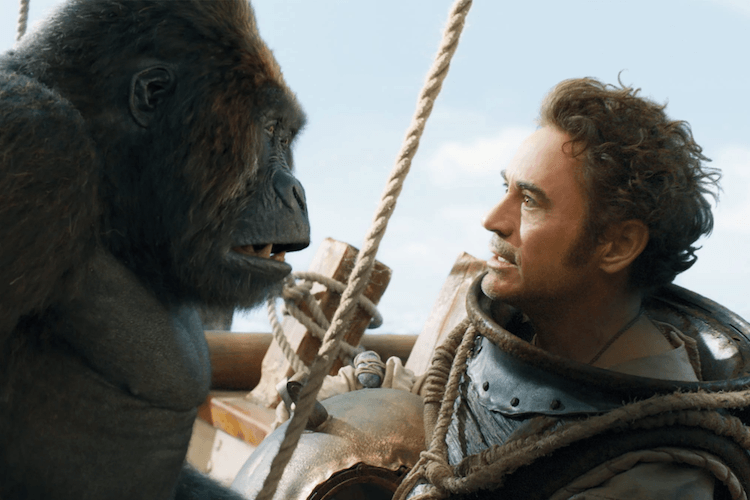Perhaps the most infuriating thing about Dolittle is that somewhere beneath its inappropriate jokes, poorly developed characters and Robert Downey Jr.’s bizarre acting choices, there’s a whiff of a good movie that could have been. Stephen Gaghan’s mess of a family film — which was attracting bad buzz well before its release — has some hints of good ideas, but they’re abandoned in favor of a lazy script and humor that’s more childish than childlike.
The film actually starts with a charming animated introduction, narrated by Emma Thompson, that introduces John Dolittle (Downey), his animal entourage and home on a royally sanctioned nature preserve, and his adventurer wife, Lily (Kasia Smutniak). They live an exciting life rescuing and communicating with animals in need around the world until Lily dies at sea, and the grieving Dolittle becomes a recluse.
Years later, a boy called Stubbins (Harry Collett) stumbles upon Dolittle’s house carrying an injured squirrel. He arrives at the same time as Lady Rose (Carmel Laniado), a young member of the royal court, who needs Dolittle to help the queen (Jessie Buckley, ostensibly playing Queen Victoria, but looking nothing like her) overcome a mysterious illness. Should the queen die, the nature preserve on which Dolittle and his animal pals live will revert to the national trust and immediately be revoked, because that’s how royal decree works.
Dolittle deduces that the queen has been poisoned by deadly nightshade. The cure is a semi-mythical plant called the Eden Tree, which can only be found on a mysterious island (Google informs me there are actually other antidotes, but they don’t sound nearly as magical). With the plucky Stubbins and animal companions in tow, Dolittle heads on a voyage to find the tree, followed in hot pursuit by the queen’s duplicitous physician (Michael Sheen).
It’s a flimsy premise, and the adventure that follows is beset by cheap jokes, jammed-in celebrity voices and Antonio Banderas wearing a funny hat, among other odd choices. Throughout the proceedings, Downey puts on a Welshified version of his Sherlock Holmes accent, presumably for the sake of quirk. At one point there’s a dragon who suffers from an impacted colon from all the armor she’s ingested over the years (not making this up), which serves as an opportunity for a giant fart joke. Curiously, the passed gas in question doesn’t involve fire, which feels like a missed opportunity.
There’s a lot of goofiness piled on to Dolittle at the expense of good storytelling, something Paul King’s Paddington movies — clearly a visual inspiration, if not also a dramatic one, for Gaghan — have managed to avoid. There’s an endearing potential to the story at the heart of Dolittle that’s thematically similar to King’s family-friendly masterpieces as well. This gets rejected early on, because if there’s anything the enduring popularity of Paddington, Pixar, Disney animation, and the How to Train Your Dragon movies have taught us, it’s that kids don’t like story. The relationship between Stubbins and Dolittle, the entire character of Lady Rose, and Sheen’s villainous motivations are barely developed, and mostly get shelved in favor of spending more time with John Cena voicing a perpetually chilly polar bear.
Perhaps it’s silly to get angry about a movie that seemed cursed from the outset, but there’s enough good in Dolittle to suggest that it didn’t have to be this way. The production design is there, and it also features glowing cinematography from frequent Guillermo Del Toro collaborator Guillermo Navarro. There are also elements of a decent story, with Stubbins’ development and the animals’ concern for the curmudgeonly Dolittle potentially setting up a predictable-but-sweet narrative about created families. With even a little narrative effort, and perhaps a stronger directorial hand, Dolittle could have been decent, even good. As it is, it’s better forgotten.
D

